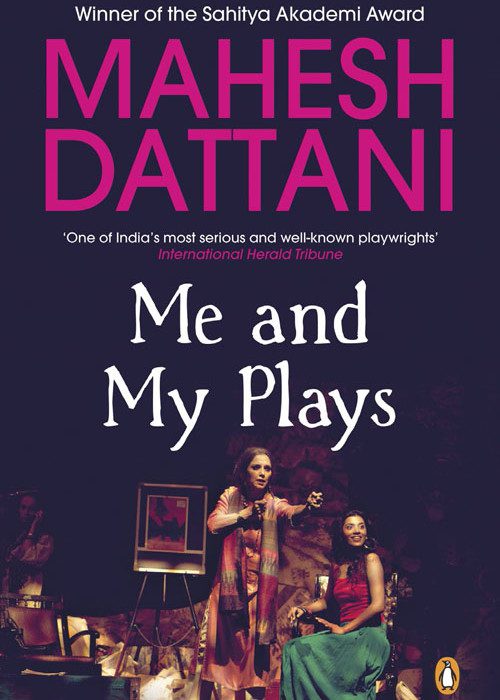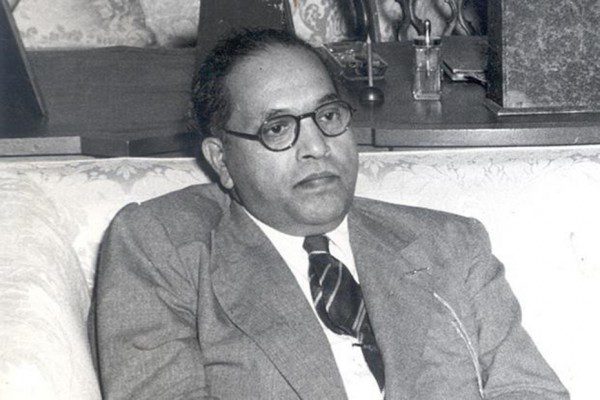Mahesh Dattani’s new book Me and My Plays, brings to its readers two previously unpublished plays as well as an introduction which is an autobiographical essay of the author’s journey into the world of theatre. In this essay, the author traces his growing-up in a middle-class Gujarati family in the cosmopolitan city of Bangalore and his relationship with both the vernacular and English language and the performing arts. It also reflects the author’s growing tension with the English language as a medium of performance; his discomfort at not having enough command over the vernacular reflecting the deep-rooted Macaulian ideology of English-speaking Indian elite; the search for a language that would allow him to represent his reality truthfully: “I didn’t have an audience, because I didn’t have a language.” Apart from language, his other concern is of content— how to come out of the impasse that English-language theatre had got itself into— improvisations of canonical English texts. His next move was thus to write a play, a play that people could identify with. Not some out-of-context drama but a theatre of everyday flesh-and-blood people, that the audience could identify with; characters who exist amongst us— in our families, communities, neighbourhoods, peer group. He appropriates the English language to make a counter-hegemonic move and as he himself quotes from The Tempest, “You taught me language; and my profit on’t/Is, I know how to curse…” The very language that is alienating, which is classical, is used to tell the stories of the everyday. And that is what Dattani does in the two plays in the book.
The first play Where Did I Leave my Purdah? is a feminist take on the lives of three women belonging to three different generation bound together by theatre and a shared history. The play loaded with metaphors, from literature to the nation, questions patriarchal norms that govern women’s lives. The play is about Nazia Sahiba, a theatre star of yester-year whose ambition to (re)produce the story of Shakuntala and to reinvent her theatre company ‘The Modern Theatre’ as ‘The Post-Modern Theatre’ is thwarted by the memories of a dead woman. While past and present merge, and the divide between reality and theatre slowly gets blurred, we are taken to and fro from the confrontations of an aunt and niece to 1948 partitioned India and its violence on women; this is a story of memories and its constitutive role of our present and future. Two Muslim sisters (Nazia and Zarine) and Nazia’s Hindu lover Suhel escape to India to explore the possibilities of a new life in a new land. As the story unfolds we get to know that the journey from Pakistan to India was fraught with violence, mostly on the two women’s bodies. Zarine, mistaken for a Hindu, loses her life to Muslim fundamentalists and Nazia, after crossing the border is raped by Hindu men. She gives birth to a daughter, Rabiba, who she passes off as her dead sister’s child and marries Suhel and together they struggle with the theatre company. Suhela and Nazia’s marriage turns bitter as the hidden tragedy gnaws away at their relationship, ultimately leading to a divorce. Rabiba grows up as the neglected niece, who in turn has an unsuccessful marriage and a daughter who studies abroad. She returns to her aunt to demand to know whether her father is Suhel and that Nazia should acknowledges publicly that it was Zarine who played the role of Shakuntala in the formative years of the theatre group and give her the credit as the co-founder. Jarred by the presence of Nikhat (Rabiba’s daughter, back from USA), who looks like Zarine, Nazia confesses the past.
A play within a play, Kalidasa’s Shakuntala invokes the questions of memories, nostalgia and the search for the self. The writer’s choice of Shakuntala is apt as a narrative that journeys from amnesia to remembrance, which brings into relief the protagonist’ journey— her loss and grief, her remembering and forgetting, as her personal life is torn apart by the violence inflicted by partition. Her only solace is theatre— the cathartic effect of doing theatre — where her personal loss as Nazia seeps into the role of Shakuntala; where she reclaims the memory of her dead sister; where the real life drama of husband-wife is played out on stage as Shakuntala and Dushyant. Dattani plays with the traces of memory and how it inflects our present and future: Nazia is unable to break free from her ghosts; loss of land, family, sister and love; she lives it every day; she lives it through her theatre; her disdain for her husband; her repulsion towards her daughter. She remembers everyday that the possibilities of her new life in a new land was made possible by the violent death of her sister in the hands of communal forces — a ‘sacrifice’, an extension of patriarchal logic, where a sister swears on a holy text to protect her family. While the theatre purges Nazia of her grief, it reminds her everyday of her loss.
The second play, The Big Fat City is a sarcastic take on the new-middle class; their aspirations and their anxieties. It is a grim tale of murder and greed set in the metropolitan city of Mumbai. The play takes place in an upscale but small apartment, where the owner-couple Murli and Niharika have invited some friends over for dinner – Sailesh, a banker and Lolly, a television star. Murli who has recently been fired from an MNC, is facing debt due to a loan on his newly acquired apartment. He hopes Sailesh will be able to help him out, and to impress him Lolly has been invited. The whole narrative operates within symbols of commodified culture – cell phones, high-end designer perfumes, celebrity parties, heroin. It exposes how cultural and symbolic capital circulates – the right shirt to wear, the star to be invited over for dinner, photographs that are taken, etc. The story line has all the elements of high drama – jealousy, love, adultery, murder, violence, greed, drugs, mafia, police and corruption. And as the plot unfolds, a murder is committed and the witnesses bribed to become accomplices. Dattani’s exposure of the grim side of the most-sought after city in India is in the moment when the dead body is swung over the balcony with the nonchalance of the everyday as if people jumping over their balconies to death is an everyday matter – “That’s the pattern in this city, right?”
The hypocrisy and naked greed of the middle class is brought to relief when Anu, whose boyfriend commits the murder, bargains with Sailesh over the amount of money he would take to keep quiet. But the twist in the tale is the introduction of Anu’s brother Harjeet, who comes from Haryana to avenge family honour. The death of Anu and her boyfriend Puneet in Harjeet’s hand brings home the reality of the larger part of India. The existence of feudal, patriarchal institutions like the khap panchayat who punish with death those men and women who transgress class, caste and gender norms, creeps into the living room of the sophisticated Mumbaikar. How different are these two worlds? As Niharika says at the end of the play, “I can understand even killing for a home. But honour? Why would anyone kill for honour?”
Panchali Ray is an Assistant Professor at the School of Women’s Studies, Jadavpur University.














